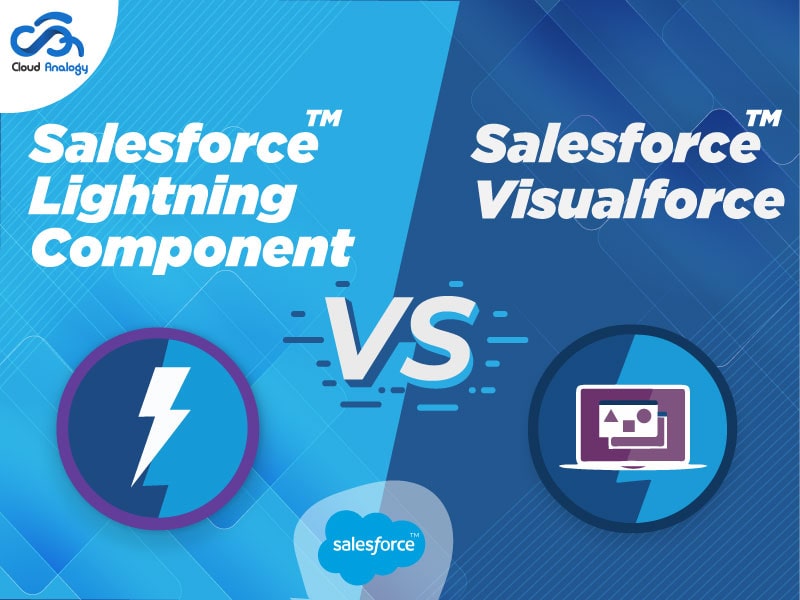Sharing is caring!
If you have been trying to find out differences between Salesforce Lightning Component and Salesforce Visualforce, this blog by Shweta Bajetha, a renowned Salesforce Lightning Champion, will surely be of great interest to you.
Let us start accessing details about Salesforce Lightning Component and Salesforce Visualforce in detail to gain a clear and complete understanding.
Visualforce
Visualforce can be defined as a framework that allows developers to effortlessly build custom, sophisticated user interfaces that can be natively hosted on the world’s number 1 CRM Salesforce Lightning platform.
Each Visualforce tag in the Visualforce markup language corresponds to a fine-grained or coarse user interface component like a page section, a field, or a related list. The behavior of Visualforce components can either be controlled by the same set of logic that is leveraged in standard Salesforce pages, or the logic can be associated by the developers by harnessing a controller class written in Apex.
The markup language is utilized in Visualforce as an example of HTML to work with database operations for designing the Apex code and pages.
Let us now have a quick look at some categories of Visualforce pages in Salesforce.
- Visualforce Page: In Visualforce, the markup language is used as an example of HTML to layout page format.
- JavaScript: JavaScript is optional and can be leveraged to cope with the processing aspect from the perspective of the consumer. It can be amalgamated with CSS to facilitate page styling.
- Custom Controller: Server side processing is managed by Apex code that is leveraged at the Visualforce web page.
- Apex Extensions: Using Apex extensions, logical operations can be executed.
Salesforce Lightning
Salesforce Lightning can be best described as a component-based framework from Salesforce.com for application development. Primarily designed for simplifying processes for business users with no programming experience, it takes sales productivity to the next level.
One of the biggest advantages of Salesforce Lightning is the fact that it comes powered with a robust set of tools and services to automate your business processes. Furthermore, Lightning components have the potential to dramatically accelerate development and app performance.
The Lightning framework is termed as a brand new app-centric version that empowers enterprise and records logics to enhance dynamic net packages supposed for cellular gadgets and computing devices.
Salesforce Lightning doesn’t completely substitute a web page at a specific time. Instead, it generates, remodels, and animates the person framework. Packages are used in Salesforce Lightning Components and Applications for saving the necessary files and confirming the fluid motion of consumer framework.
The Salesforce Lightning Component package includes:
- Controller: Using a JavaScript Controller, you can prefer it for server-side processing that deals with the patron feature.
- Component: It is defined as a markup language to configure the aspect’s format.
- Documentation File: It offers reference or pattern code files to apply once the elements are received.
- Design File: This record is used for specific Lightning pages or in Lightning App Builder to explain the layout-time conduct of the thing being layout.
We hope this blog on the differences between Salesforce Lightning Component and Salesforce Visualforce was useful to you in more than just a way.







